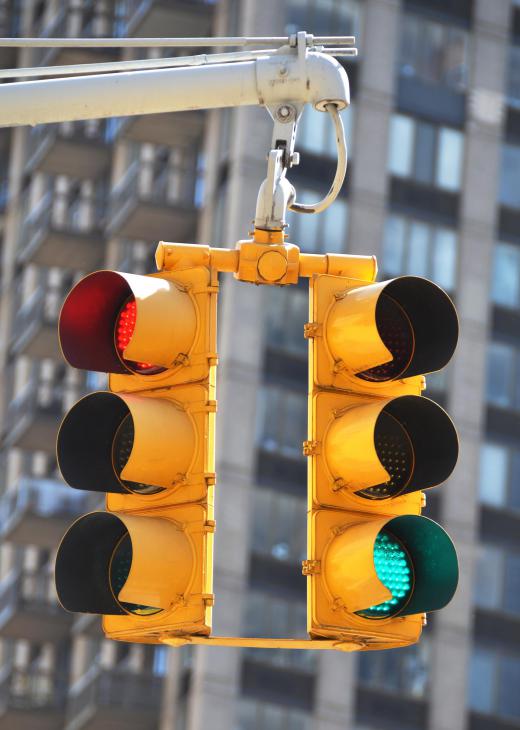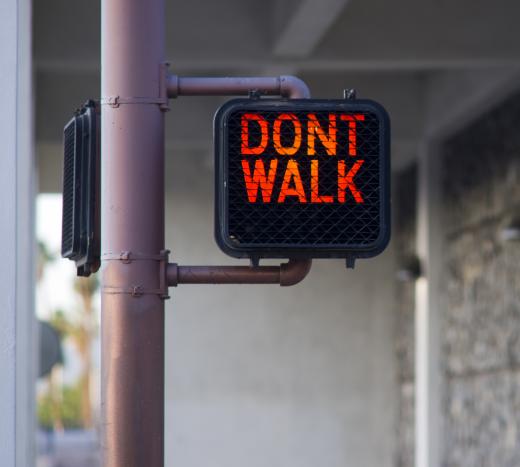All over the world, pedestrian signals are used to help motorists and pedestrians share the road. A combination of colored lights and signals are used to stop vehicle traffic in one direction, start it in another, and inform pedestrians when it is safe to cross the street. Surprisingly, the actual symbols used in pedestrian signals are fairly consistent around the world.
There are two classes of pedestrian signals: joint traffic and dedicated pedestrian crossing. Joint traffic pedestrian signals are typically found at intersections. Traffic signals are used to control the vehicle traffic and pedestrian signals are used to ensure pedestrians are able to cross the road safely. In this scenario, both the vehicles and the pedestrians have dedicated signals.

The traffic signals for vehicles have red, yellow, and green lights. One light is shown at a time, and they are changed on a timer. The lights for each street are coordinated, so that traffic is only moving one way through the intersection at a time. There are minor variations in traffic signals, but the colors are universal. The red signal means stop, yellow is yield, and green is to proceed.

Pedestrian signals in an intersection are also coordinated with the traffic signals, but are a completely different set of signals. The most common pedestrian signals are pictographs. An image of a person walking is used to indicate the road is safe to cross, and an upturned hand is used to indicate the road is unsafe. In the United States, some signals use the English words "Don't Walk" and "Walk" instead of pictographs. However, this type of signal is being slowly replaced with the more universal pictographs.
In many countries, additional features are added to the signals to provide more information to the pedestrian. For example, a walk signal may change into a flashing hand five seconds before the signal changes. In other locations, a countdown from ten to zero is used to indicate the amount of time remaining before the signal changes. The purpose of these two enhancements is to let pedestrians know how much time remains so he or she can decide if there is enough time to cross the road safely.
A dedicated pedestrian crossing is located in a section of road without any intersecting street. The pedestrian can stop vehicular traffic by pressing a button, which triggers flashing yellow lights. Once the vehicles have stopped, the pedestrian can cross the road. This type of crossing is often located in front of schools and shopping centers.
